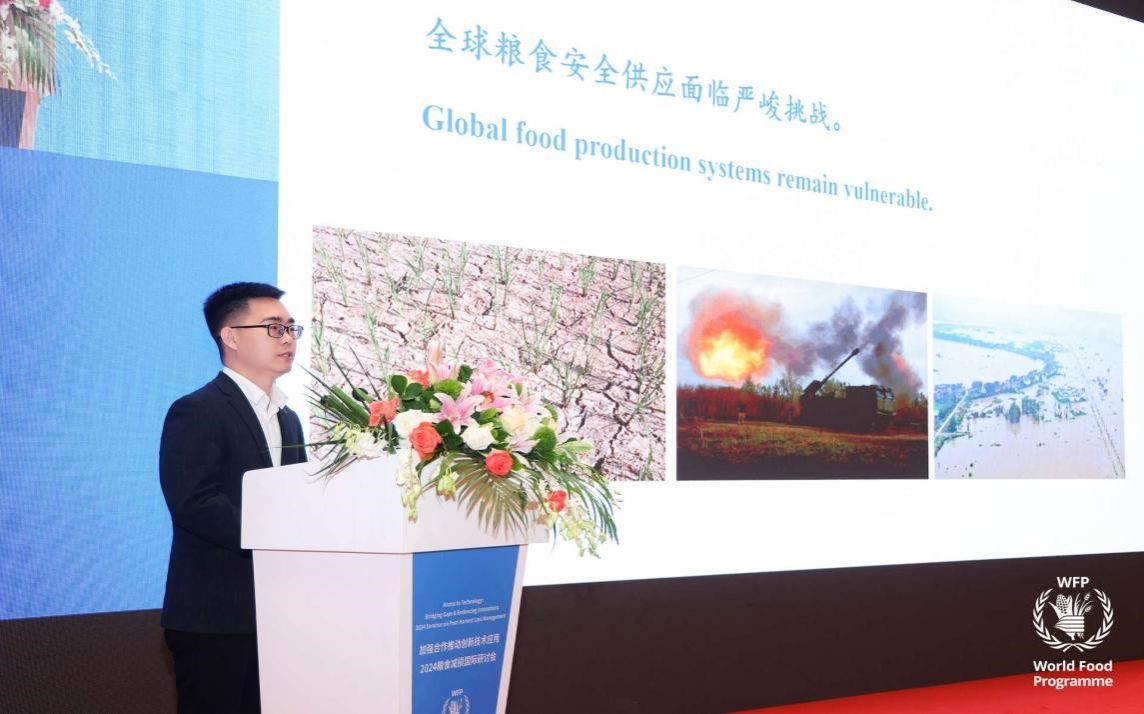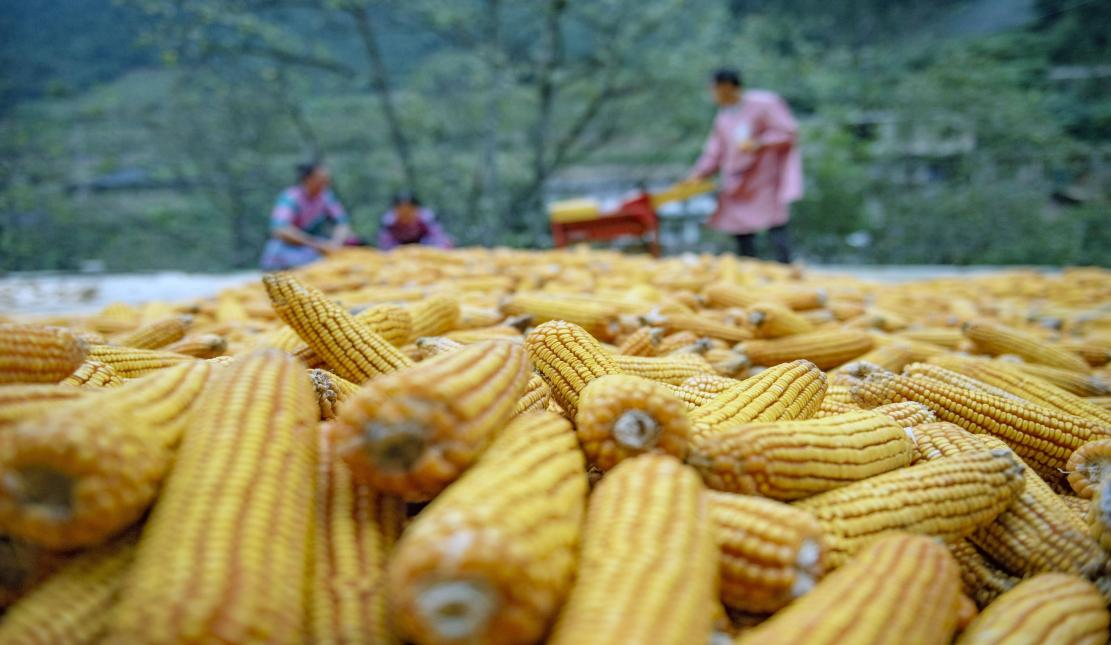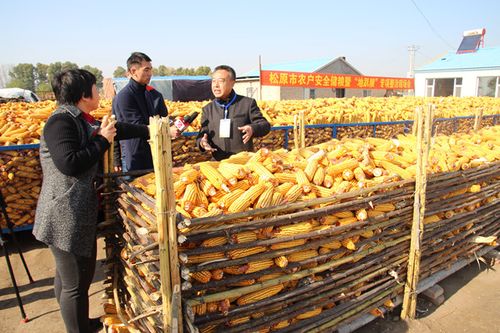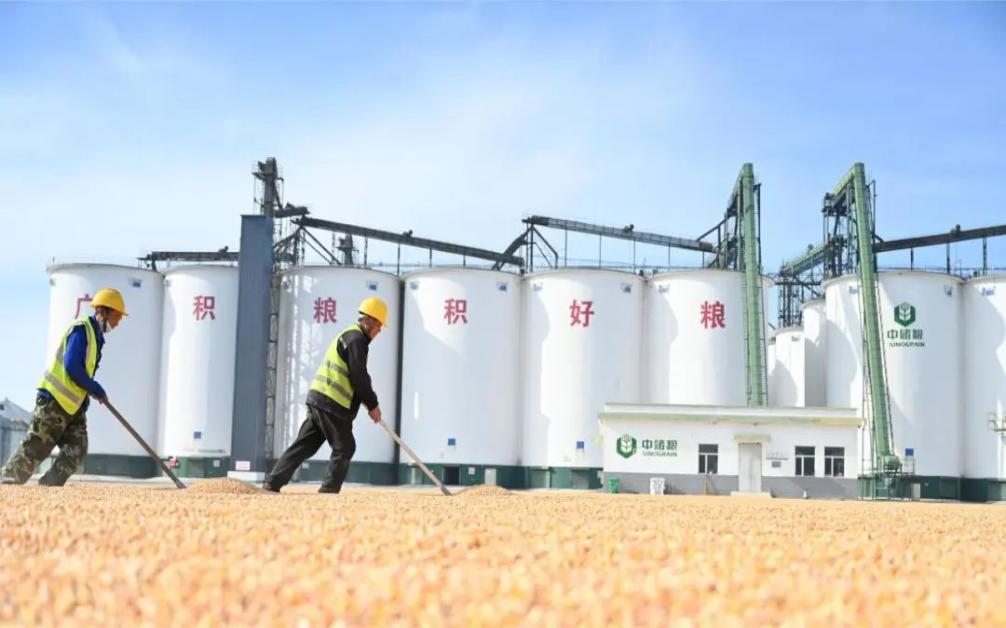
Prof. Li Zhi, School of Economics and Trade, Henan University of Technology
Abstract
This document presents a comprehensive overview of China's policies and practices aimed at reducing post-harvest grain losses. With food security posing significant challenges amidst global climate change and domestic resource constraints, China has taken decisive actions to mitigate grain losses throughout the production chain. The document first analyzes the current status of post-harvest grain losses in China, revealing annual losses ranging from 289-368 million tons, equivalent to a 14% loss rate. Focusing on Henan Province, it delves into specific loss rates across harvest, storage, transportation, and processing stages. It then highlights China's multifaceted approach to reducing these losses, including the implementation of scientific grain storage projects, green storage initiatives, optimized logistics models, advocacy for moderate processing, and promotional campaigns against food waste. The document emphasizes the importance of systemic measures such as strengthening legal frameworks, establishing standards and specifications, promoting technological innovation, and achieving whole-chain governance. These practices not only contribute to national food security but also facilitate resource conservation and emission reduction, showcasing China's commitment to sustainable agriculture development.
Grain is the material foundation for human survival. Currently, global climate change poses severe challenges to food security and supply. Meanwhile, China’s domestic grain production faces dual constraints of resources and environment, with limited room for increasing production. Reducing grain loss and waste has become an important task in maintaining food security. In recent years, China has continuously explored practices in post-harvest stages, effectively reducing post-harvest losses, making positive and important contributions to national food security, resource conservation, and emission reduction.
I. Current Status of China’s Post-harvest Grain Losses
1. National Overall Analysis
In recent years, China’s grain loss and waste situation has been severe. The Development Research Center of the State Council comprehensively reviewed existing academic research in 2022 and concluded that China’s annual post-harvest food losses range between 289-368 million tons, with an average loss rate of about 14%; annual food waste in the consumption stage ranges between 27-35 million tons, with an average waste rate of about 5%. Large-scale survey research shows that the comprehensive loss and waste rate of China’s three major grains (wheat, rice, and corn) is 20.02%, with an annual total loss and waste of 120 million tons.
The hidden costs of grain loss are even harder to estimate. Surveys on harvest and farmer storage losses of eight major grain and oil crops (rice, wheat, corn, potatoes, sweet potatoes, soybeans, peanuts, and rapeseed) show that the total loss rate in harvest and storage stages is 5.64%, equivalent to a production loss of 29.851 million tons and a loss of 5.5835 million hectares of farmland. The total hidden costs caused by harvest and storage losses reached 94.19 billion yuan. If the grain harvest and storage loss rates were reduced to 1%, it would be equivalent to saving 3.5025 million mu of farmland and reducing grain production costs by 55.466 billion yuan.
2. Analysis of Central China’s Henan Province
Henan Province is a major grain-producing province in China. The province has a total cultivated area of 7.51 million hectares and total grain production exceeding 65 million tons. Surveys on post-harvest grain losses in Henan Province show that losses occur to varying degrees in multiple stages including harvest, storage, transportation, and processing.

(1) Harvest Stage: According to surveys, the average loss of corn and wheat during harvest in various areas of Henan Province is mostly between 15-20 kilograms per 500 kilograms, with a loss rate of around 3%-4%. Compared to the loss rate of about 5% shown in China’s grain harvest loss survey results from the late 20th century, the post-harvest front-end harvest loss rate for wheat and corn has significantly decreased.
(2) Storage Stage: The comprehensive loss rate in the grain storage stage in Henan Province is 0.53%. There are certain differences in grain storage losses among different types of granaries. National grain reserve warehouses have the highest storage loss rate at 1.39%, followed by grain trade warehouses at 0.87%, while grain transfer warehouses have a lower storage loss rate at 0.05%. Among these, state-owned enterprises have a grain storage loss rate of 0.54%, higher than the 0.47% loss rate of private enterprises or enterprises of other nature.
(3) Transportation Stage: Road transportation is the main mode adopted by grain transportation enterprises in Henan Province, accounting for 65% of all surveyed grain transportation enterprises. Based on loss data from 31 grain transportation enterprises, the overall grain transportation loss rate in Henan Province is 0.198%. Among these, road transportation over 21 kilometers has a loss rate of 0.256%, while road transportation under 20 kilometers has a loss rate of 0.140%; packaged transportation has a loss rate of 0.189%, while bulk transportation has a loss rate of 0.207%.
(4) Processing Stage: The grain processing loss rate of enterprises in Henan Province is 2.26%, with the lowest processing loss rate being 0.32% and the highest being 6.89%. Additionally, half of the grain processing enterprises have processing loss rates between 1-3%, enterprises with processing loss rates below 1% account for 30% of the total surveyed enterprises, and those with processing loss rates exceeding 3% account for 20% of the total surveyed enterprises.
Based on the results of the post-harvest grain loss survey in Henan Province, factors affecting grain loss mainly concentrate on harvesting methods, storage technology, packaging and transportation processes, raw grain moisture content, processing technology, loading and unloading equipment, and economic income levels.
II. China’s Practices in Post-harvest Grain Loss Reduction
In recent years, the Chinese government has deeply implemented grain conservation actions, promulgated the "Grain Conservation Action Plan," continuously improved the legal standard system, perfected grain-saving and loss-reduction incentive mechanisms, and taken multiple measures to promote grain loss reduction throughout the entire chain of production, procurement, storage, transportation, processing, sales, and consumption.
(1) Procurement and Storage Stage: The Chinese government has implemented special construction projects for scientific grain storage by farmers, adopting a combination of central investment subsidies, local fiscal fund subsidies, and farmers’ self-financing to provide new storage equipment for farmers meeting project site requirements. It has also built a post-harvest service system to meet farmers’ technical service needs for cleaning, drying, and storing grain after harvest, effectively improving farmers’ grain storage conditions, enhancing storage quality, and reducing farmers’ grain storage loss rates. Since 2007, this project has built 10 million sets of standardized, economical, practical, pest-resistant, and mold-resistant new grain storage equipment for farmers in 26 provinces. From 2017 to 2020, over 5,500 specialized grain post-harvest service centers were established nationwide, providing cleaning, drying, storage, processing, and sales services to farmers, fully playing a role in promoting grain quality improvement and loss reduction. In 2022 alone, national grain post-harvest service centers served over 17 million farming households, cleaned 160 million tons of grain, dried over 45 million tons of grain, and helped farmers reduce grain losses by over 12 million tons, playing an important role in helping farmers reduce losses and increase income. For example, Jilin Province has deeply carried out remediation work on the "ground-lying grain" problem. Previously, farmers in this region were accustomed to piling corn on the ground in winter, commonly known as "ground-lying grain." This crude storage method easily leads to mold and grain damage. To change this situation, Jilin Province has fully promoted vertical grain storage in courtyards. The vertical storage rate of corn among farmers across the province has reached over 90%, reducing "ground-lying grain" by nearly 13 million tons. Hebei Province has launched the "Hundred Cooperatives, Hundred Households" campaign, selecting 100 farmers’ grain production cooperatives and 100 large-scale grain farming households. Through online and offline methods, they visit cooperatives and large-scale farmers to understand needs, promote technology, and provide guidance services, radiating influence to reduce post-harvest storage losses among farmers across the province. They actively cultivate new models of grain drying socialization services at production sites, such as "agricultural machinery enterprises + cooperatives + farmers," and improve farmers’ scientific grain storage technical level. Farmers’ grain storage losses have decreased from 8% ten years ago to 2.9%. Currently, the State Administration of Grain and Material Reserves is organizing the compilation of technical points for farmers’ grain storage and equipment selection guidelines to provide further scientific guidance for farmers’ grain storage.


(2) Warehousing Stage: The Chinese government has deeply implemented the "Grain Green Storage Improvement Action," strengthened the construction of high-standard grain warehouses, promoted the upgrade and renovation of old warehouses, further improved key performance aspects such as grain warehouse airtightness and insulation, and guided various regions to promote and apply advanced and suitable green storage technologies according to local conditions. Currently, the national standard grain warehouse capacity in good condition is nearly 700 million tons, and the "four-in-one" grain storage technology widely applied in grain storage, including mechanical ventilation, grain cooling, circulation fumigation, and grain condition monitoring and control, has become standard equipment for state-owned grain warehouses. The national application scale of nitrogen and other controlled atmosphere grain storage technology has reached over 55 million tons, low-temperature and quasi-low-temperature grain storage capacity exceeds 200 million tons, and the application scope of raw grain low-temperature storage technology is gradually expanding, effectively ensuring grain storage quality and reducing storage losses. A large number of digital grain warehouses have been newly built or renovated. The Grain Bureau of Zhejiang Province uses intelligent technology to strengthen scientific management of grain, significantly reducing the average grain storage loss rate and controlling it below 1.2‰; each time grain enters or leaves the warehouse, grain losses can be reduced by over 100 tons. The Shazhou Central Grain Depot in Zhangjiagang, Suzhou, uses digital equipment for real-time monitoring of pests on the surface and inside grain piles. Data from the State Administration of Grain and Material Reserves shows that grain losses in Chinese warehouses have been basically eliminated, with the comprehensive loss rate during grain storage periods controlled within 1%. Grain storage is advancing from the stage of "safe storage and loss reduction" to a high-quality development stage of "quality preservation and green optimal storage."
(3) Logistics Stage: First, actively promoting grain transportation models such as "one container through" and "bulk to container." Through open-top containers and containers to transport grain, the entire transportation process involves mechanical operations for all transfer operations, and containers do not touch the ground from the loading point to the factory, reducing the number of loading and unloading times during grain transportation, thereby reducing grain transportation losses and improving economic benefits. Second, improving the standardization level of bulk grain port operations. In 2022, the Ministry of Transport issued the "Guidelines for Loss Reduction and Conservation Management in Bulk Grain Port Operations" (hereinafter referred to as the "Guidelines"), clearly stating that port enterprises should optimize operation processes to minimize grain losses in port operations. It advocates the application of new technologies, new processes, and new equipment, using high technology to strengthen loss reduction and conservation management in bulk grain port operations. For example, it encourages the use of continuous loading and unloading equipment and fully enclosed conveying equipment to address the problem of easy spillage during bulk grain loading and unloading operations; it recommends using intelligent grain condition monitoring systems to strengthen monitoring of temperature and relative humidity of grain piles in warehouses to address weather impacts on grain. Third, grain logistics services are becoming "customized." China Railway Shenyang Bureau arranges dedicated personnel to understand enterprise shipping needs, providing "one enterprise, one policy" customized menu-style services, offering convenience to enterprises through "point-to-point" loading to the maximum extent. Meanwhile, it has established a "white list" mechanism for grain transportation enterprises and issues "green passes" for grain transportation vehicles. For grain transportation enterprises included in the "white list" management, except for necessary safety production inspections, no other inspections are conducted on white-listed enterprises, and difficulties and problems encountered by white-listed enterprises are tracked and coordinated for resolution in a timely manner.
(4) Processing Stage: Fully advocating moderate processing and reasonable processing, conducting research and development and result promotion of appropriate processing technologies for finished grain and oil products, avoiding excessive processing leading to low output rates, promoting research on appropriate processing standards, and providing support for effectively reducing unnecessary grain losses and energy consumption. In recent years, the State Administration of Grain and Material Reserves has issued a batch of national standards and industry standards related to grain conservation and loss reduction, such as Wheat Flour, Rapeseed Oil, Wheat Bran, Germinated Brown Rice, etc. Meanwhile, strengthening the project establishment work for standard formulation and revision, formulating and revising 36 standards including High-quality Grain Warehouse Construction Standards and Technical Specifications for Appropriate Rice Processing. Continuously conducting research work related to whole grain healthy food creation, jointly developing new products with enterprises such as whole grain oat milk products, sprouted whole wheat flour noodles, and whole grain flour bread. Completing technical research on rice appropriate processing control models, implementing the enterprise standard Appropriately Processed Rice. Actively exploring the comprehensive utilization potential of rice bran, bran, soybean meal, etc., improving the efficiency of comprehensive grain utilization.
(5) Consumption Stage: Actively promoting conservation, opposing waste, combining with annual World Food Day, National Food Security Publicity Week, and National Grain and Material Reserve Science and Technology Activity Week and other themed activities, producing promotional materials, organizing special lectures, conducting online and offline publicity, conveying the concepts of loving grain, saving grain, and healthy consumption, innovating publicity forms, organizing activities to bring grain and oil science popularization to communities, families, and schools, vigorously advocating scientific and civilized consumption methods, and helping to carry out the Clean Plate Campaign.
III. Lessons from China’s Post-harvest Grain Loss Reduction Practices
1. Strengthening System Construction
To promote the construction of grain conservation and loss reduction systems, China has issued numerous policy documents, laws and regulations, and plans. To promote the formation of a long-term mechanism for grain loss reduction, the Anti-Food Waste Law was promulgated and implemented in 2021, the Grain Circulation Management Regulations were revised and implemented, and the Food Security Guarantee Law has been implemented from June 1, 2024, gradually deepening the legal governance of grain conservation and loss reduction. Grain conservation and loss reduction work has been incorporated into the central government’s assessment of local governments’ responsibility system for ensuring national food security. Local governments at all levels must, based on this work assessment, propose annual grain conservation and loss reduction target tasks and implementation measures.
2. Strengthening Standards and Specifications
Systematic reduction of grain loss and waste requires more standard guidance. Currently, China has established grain-related technical standards covering storage, logistics, processing, and other stages. For example, standards such as rice and edible oil have been revised and issued, and the Technical Specifications for Grain and Oil Storage clarifies various effective measures for loss reduction in the storage stage. Continue to strengthen the formulation and revision of technical standards related to green storage. Improve the standard system for appropriate processing of grain for human consumption, accelerate the establishment of a whole grain standard system, strengthen the formulation and revision of national standards for new grain machinery equipment, etc., and continue to reduce grain losses through standard guidance.
3. Promoting Scientific and Technological Support
Established 4 national engineering research centers in post-harvest areas such as grain storage and transportation, 23 grain industry technology innovation centers, and 12 bureau-level grain post-harvest field engineering technology research centers, forming the framework of a grain post-harvest loss reduction technology innovation system. Timely discovery and prevention of grain pests and molds from early warning, monitoring, testing, and other stages to reduce grain losses. China has developed and applied food-grade inert powder physical control technology, ionizing radiation, microwave, light trapping and other physical insect killing technologies, nitrogen controlled atmosphere insect killing technology, and conducted research on predatory mite biological insect control technology, multiple bactericides, S-allyl ester, plant-derived insecticides, and other new technologies and products for green ecological control of stored grain pests.
4. Promoting Whole Chain Governance
Adhering to whole industry chain and systematic governance of grain losses, successively issued documents such as Action Plan for Grain Conservation, Loss Reduction and Healthy Consumption Improvement, Guiding Opinions on Strengthening Grain Conservation and Loss Reduction Work, Technical Guidelines for Grain Transportation (Trial), Opinions on Accelerating the Construction of Grain Production Site Drying Capacity, strengthening management throughout the entire chain of grain production, procurement, storage, transportation, processing, sales, and consumption. China has now formed a long-term mechanism for society-wide grain conservation and loss reduction action led by the government, implemented by enterprises, and participated in by all people, a working mechanism where departments such as agriculture, development and reform, grain, commerce, and markets coordinate and take responsibility, and a social co-governance mechanism with participation from grain-related enterprises, industry associations, and research institutions.
These practices and experiences adhere to the equal emphasis on developing sources and conserving resources, increasing production and reducing losses, vigorously promoting loss reduction throughout all stages and the entire chain, and systematically reducing grain losses and waste.

